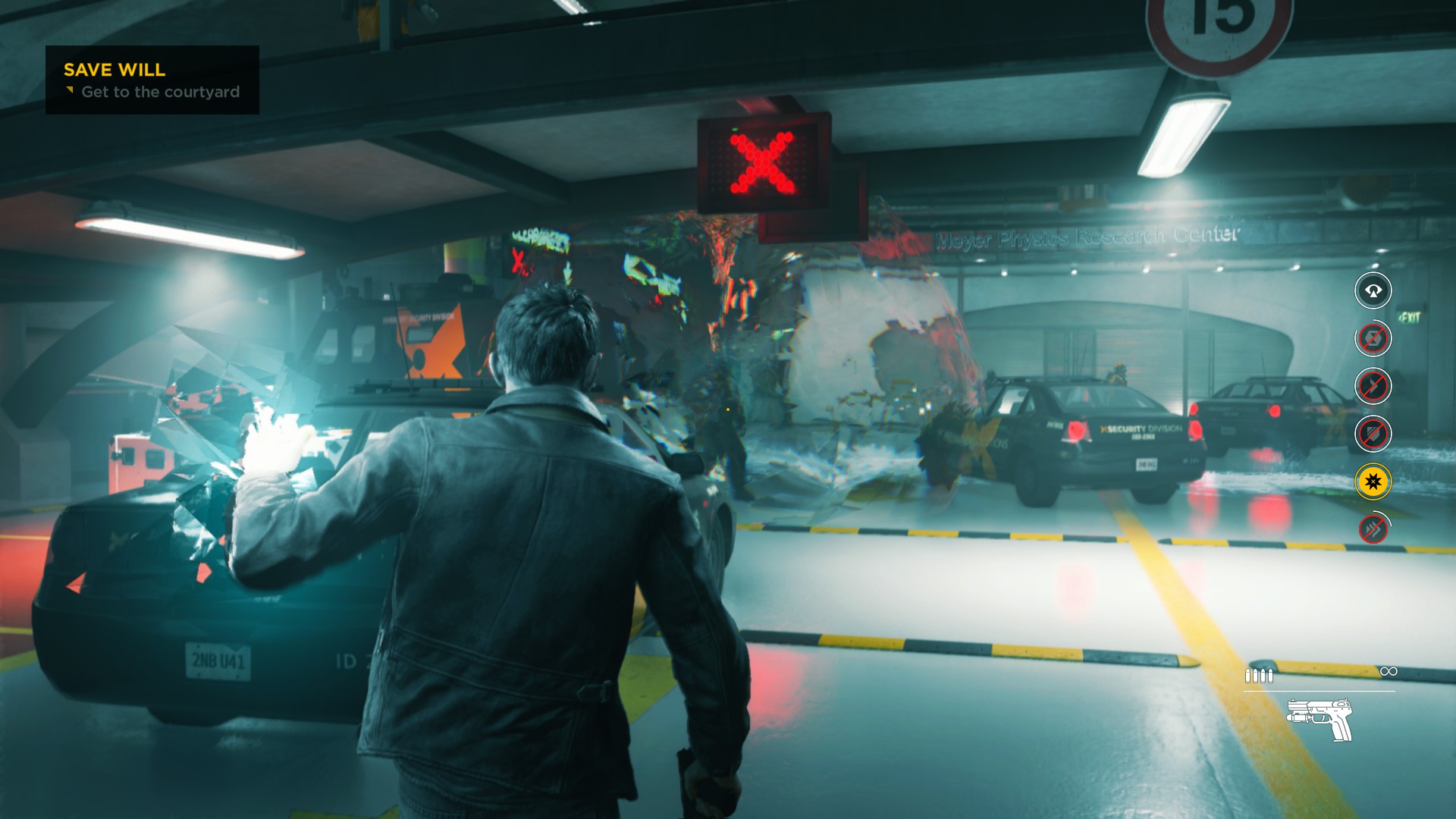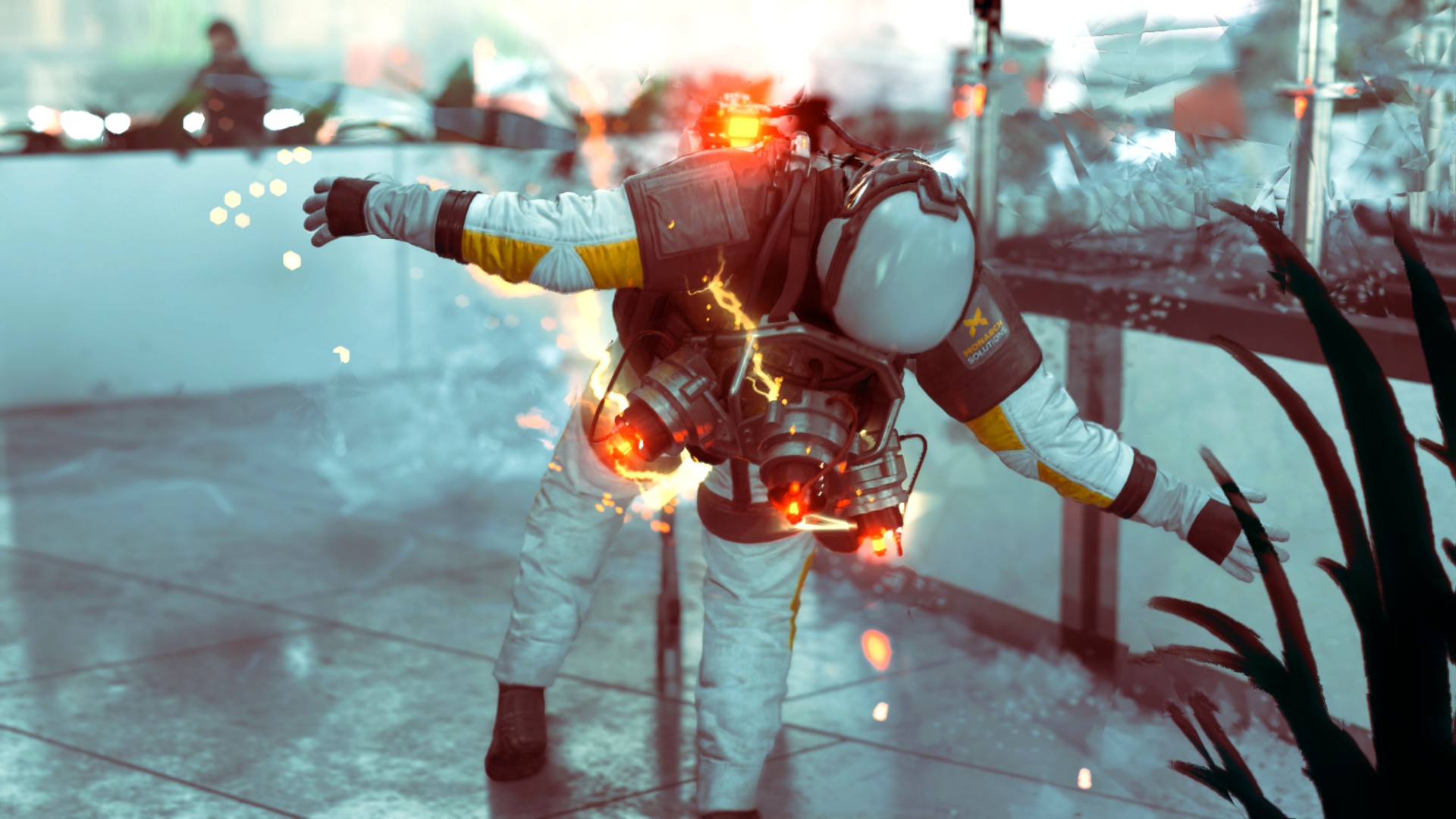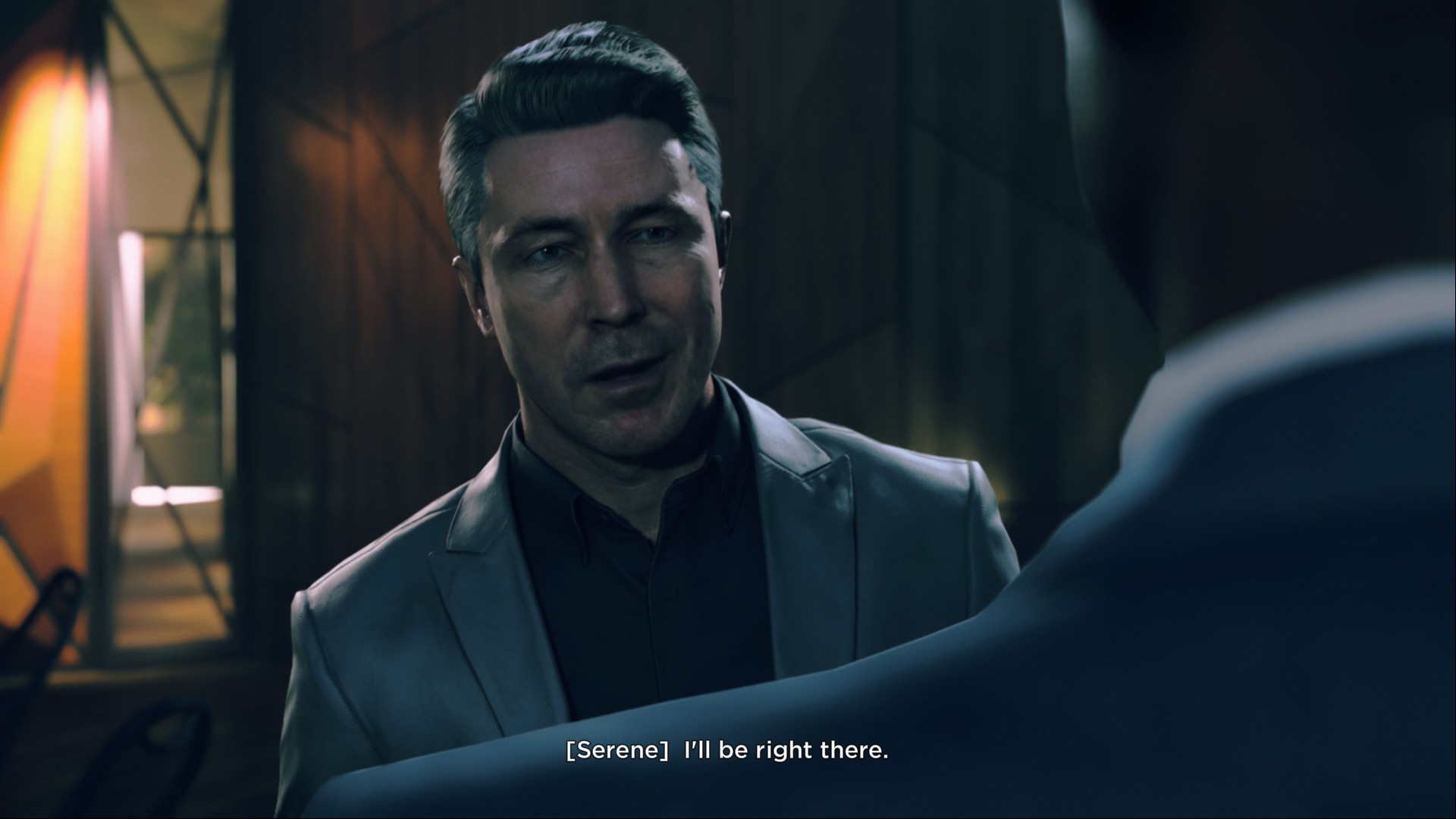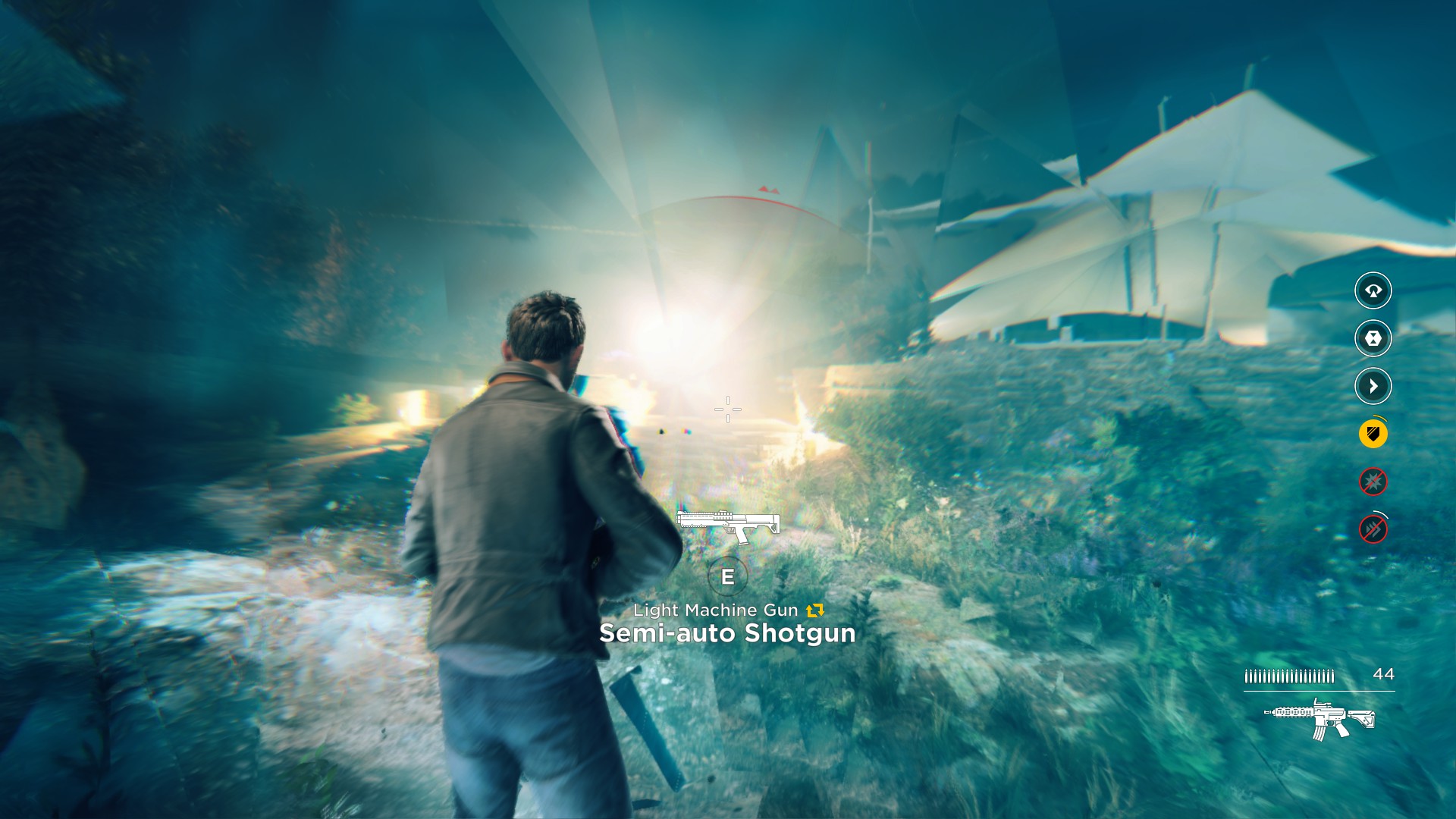Quantum Break Review
Since there were no happy owners of Xbox One or even happier users of Windows Store among us, Quantum Break successfully bypassed the grasping editorial paws twice. We had to be content with footage demonstrating an impressive action movie, insane time manipulations, and the cunning Sam Lake, who promised that everything would be cool. You can definitely trust him, right?
Now that the game has been released for the third time on the most user-friendly platform available, we personally have seen – it’s not possible.

However, as long as the interactivity of the action remains at a minimum level, everything seems to be fine. The prologue tells the story of how flawless models of almost famous actors accidentally manipulate time, learn to control it, and sincerely wonder why Aidan Gillen has once again taken on the role of the villain. It is presented quite standardly, but the twist that turns the world into an unstable and jerky mishmash of events adds at least one intrigue – how will it be played out.
Spoiler: exactly the same as always. Right after a short introduction, we are bombarded with a ton of weapons and the show “Good day, I’m a boring shooter” begins. Get ready, the performance will be long and monotonous.
The action part is not exactly what you would expect from Remedy’s work, but it seems that the studio is only getting worse with it. Quantum Break doesn’t try to be revolutionary, it simply accumulates what has already been invented in a questionable combination of shooting and superpowers. The former is completely devoid of addictiveness compared to colleagues in the genre due to the overly modest and flat arsenal. Among the dozen pale assault rifles, rifles, and shotguns, only the pistols don’t resemble plastic toys from a “Children’s World” store – they provide the right sensations and often are just as useful as their larger counterparts. With infinite ammo, that is.

As for the hero’s abilities, their essence lies in mocking time. It can be slowed down, partially stopped, exploded (just because), and something else, trying to diversify the process. Partially, it probably works: there are quite a few abilities, so that clashes periodically differ from each other – but it does not have a colossal influence on the principles of combat. And all superpowers have already appeared in various “remember me” and “time shifts”, so there is no prolonged delight in them.
Moreover, the game actively insists on their use, systematically reducing the effectiveness of firearms as an independent measure. Without a couple of time bubbles, it is practically impossible to defend against anyone, which is why you have to run away and wait for the abilities to recharge more often than move forward like a superhero. Imagine if in Max Payne, after every bullet time, you had to hide behind boxes for 15-20 seconds. Something tells us that actions are not done like that.
Considering the importance of combat cover, it was a strange decision to entrust the interaction with it to the protagonist. She decides herself when to stick to walls and when to show suicidal tendencies by standing up straight, and her choices often differ from yours. A special button, in the old-fashioned way, would be very handy here, as well as crouching, sprinting, and butt-striking functions, which the game inexplicably lacks.

The controls, in principle, however, are not characterized by friendliness. When moving the character and aiming, there is a constant feeling of stickiness and unresponsiveness, typical of low frame rates. Nevertheless, even at a stable 60 frames per second, it can sometimes be problematic to aim at an enemy’s head or make a leap in the desired direction. And before another reproach is made towards the long-suffering consoles – playing Quantum Break with a gamepad is just as unimpressive and jerky.
The only good reason to endure all this is the spectacle, ruthless and overflowing. During shootouts, the screen continuously creates that impressive action movie from the trailers, filled with tons of sparks, explosions, futuristic trails, buzzing and ringing as if you are in an expensive blockbuster in an IMAX theater. The people who worked on the visual and sound design of Quantum Break created a much more vibrant and vibrating style than the game deserves.

The last defeated enemy is always shown from the signature “Max Payne” perspective.
But the shooting games also eventually come to an end, giving way to forced and melancholic exploration. The most vivid example is when the direct route is brazenly blocked, and the main character’s companions gather around and say something like, “Oh, the game is too short, go do something unnecessarily long.” Usually, to move forward, you need to find a detour, solve an annoyingly simple puzzle about “hold Q,” and return to the starting point from the other side. In other words, make a completely empty and meaningless loop.
This is, of course, a well-known industry method to lock the main entrance and create a mini-adventure on a side path. But Quantum Break, sorry, is not The Last of Us, and Remedy only openly stretches time through unnecessary movements. Sometimes, there aren’t even any puzzles there.

When it’s finally time to pay attention to the plot, it turns out that Quantum Break is just a regular sci-fi movie that you sit down to watch with friends, but halfway through you push it to the corner of the screen and use it as background for some Quake Live. There are definitely elements of a good story with excellent setup, but its development solely consists of a series of clichéd and predictable episodes. The game’s script relies on the assumption that you’ve never seen movies about time loops, alternate universes, the butterfly effect, and the fight against evil corporations. If you’re familiar with all of this, it pulls off the most grandiose trick with time – making it painfully stretch out.
Another problem with the narrative is that it is spread across multiple forms. This primarily refers to the episodic inserts. No one forces you to watch them, but to fully understand the whole picture, you have to endure about two hours of “cinema” shot in the style of blatantly cheap sci-fi TV shows. Quantum Break is not the kind of game that is enhanced by half-hour breaks after each act. Like any blockbuster, it’s better to consume it all at once, without stopping or pondering, and the TV show only disrupts the natural pace.

For the same reason, I don’t want to engage in additional exploration of locations, cluttered from top to bottom with materials on the subject. They are full of interesting and, more frustratingly, important information for the plot – but the volumes of local waste paper sharply contradict the fast pace of the game. There is simply no time to read electronic letters on several screens and decipher diagrams on half a wall, because everything around calls for movement.
And if you miss a diary entry or neglect to watch a series, the thread of the plot breaks. Characters start appearing out of nowhere, whom everyone knows except you, things are mentioned in conversations that were not mentioned before, and everyone behaves in a way that makes you feel like a complete fool.
So why couldn’t all the key facts be included in the main storyline? The story here is not as deep and grand as it wants to seem, and it can easily be presented in the traditional format of game videos, which in their current form have no independent weight at all. Apparently, the developers value pretentiousness of presentation more. Or maybe they were just trying to give significance to world exploration – in any other case, the need for it would have completely disappeared.

Well, if we don’t take into account the search for experience points to acquire upgrades, which, unfortunately, are boring to the point of absurdity. You can only make the flashes brighter, the slowdown slower, and the ability recharge faster. There is no inventiveness to expect in the improvements, it only exacerbates the monotony of gameplay that remains unchanged until the final credits.
Not that Alan Wake or, again, Max Payne spoiled us with constant updates to the used tricks. Not at all, these were games with one idea, but in both cases, the implementation of the core concepts was powerful enough to withstand the weight of the entire playthrough. In the case of Quantum Break, however, an interesting idea is at the core, but it is realized in a primitive and unoriginal way.
In the end, it turned out not bad, but mediocre. What’s most disappointing is that this mediocrity came from Remedy. Anyone could have made such a Quantum Break, with the same gameplay mistakes and storyline issues.
Share
Discuss
More Reviews





